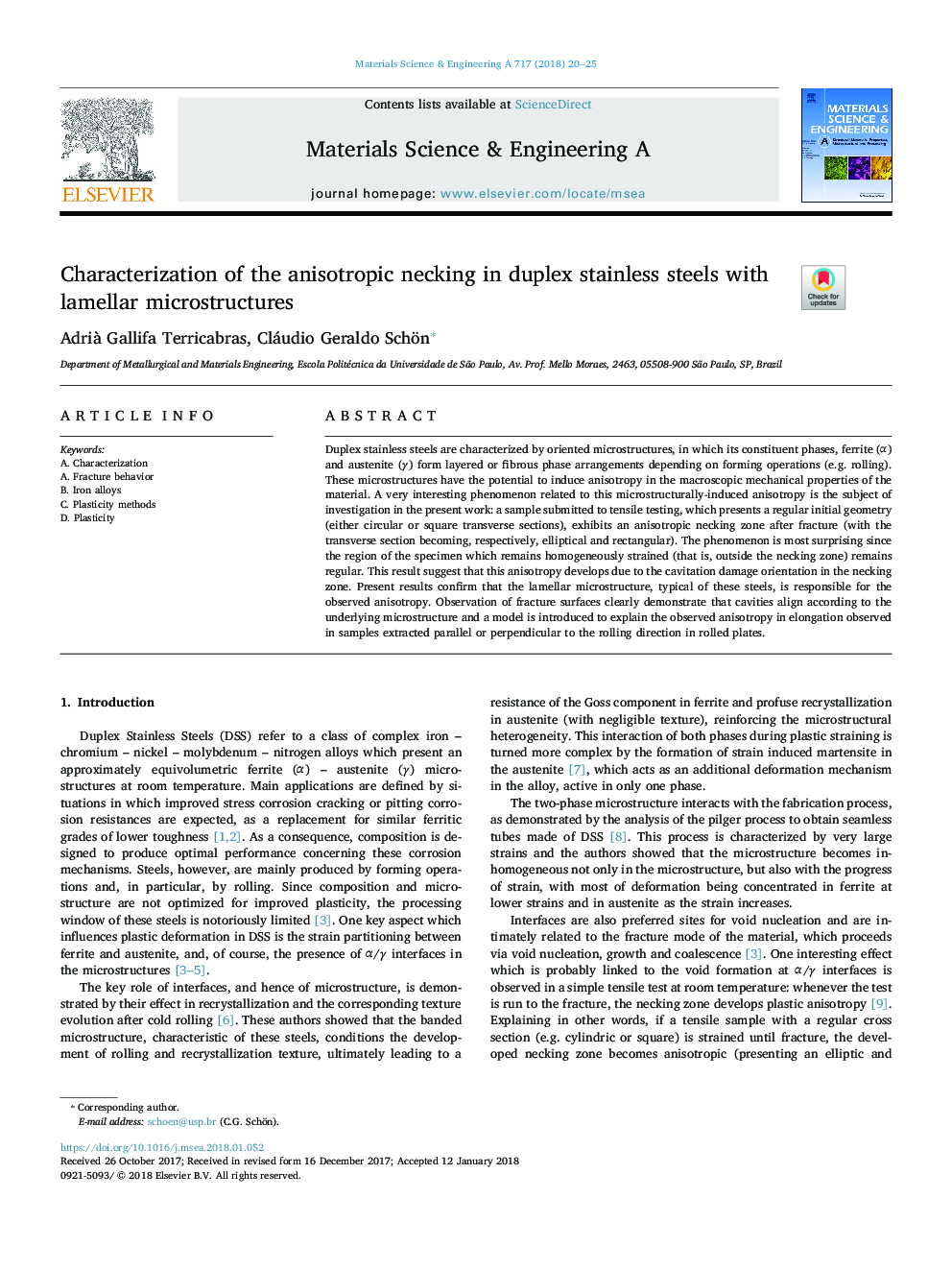| Article ID | Journal | Published Year | Pages | File Type |
|---|---|---|---|---|
| 7973350 | Materials Science and Engineering: A | 2018 | 6 Pages |
Abstract
Duplex stainless steels are characterized by oriented microstructures, in which its constituent phases, ferrite (α) and austenite (γ) form layered or fibrous phase arrangements depending on forming operations (e.g. rolling). These microstructures have the potential to induce anisotropy in the macroscopic mechanical properties of the material. A very interesting phenomenon related to this microstructurally-induced anisotropy is the subject of investigation in the present work: a sample submitted to tensile testing, which presents a regular initial geometry (either circular or square transverse sections), exhibits an anisotropic necking zone after fracture (with the transverse section becoming, respectively, elliptical and rectangular). The phenomenon is most surprising since the region of the specimen which remains homogeneously strained (that is, outside the necking zone) remains regular. This result suggest that this anisotropy develops due to the cavitation damage orientation in the necking zone. Present results confirm that the lamellar microstructure, typical of these steels, is responsible for the observed anisotropy. Observation of fracture surfaces clearly demonstrate that cavities align according to the underlying microstructure and a model is introduced to explain the observed anisotropy in elongation observed in samples extracted parallel or perpendicular to the rolling direction in rolled plates.
Related Topics
Physical Sciences and Engineering
Materials Science
Materials Science (General)
Authors
Adrià Gallifa Terricabras, Cláudio Geraldo Schön,
